Holden VE and VF Commodore: flawed masterpieces, caught out by history

I think the VE Commodore (Holden’s Billion Dollar Baby) launch was the first such event I had attended that was held on a Sunday. This car, implied the invitation, transcended anything else Australia’s motoring journalists might be planning to do; even Sunday was no longer a sacrosanct day.
It was 16 May 2006, a little less than nine years after the arrival of the VT, the Commodore with the elegant lines and premium feel that set Holden on its long-term trajectory to see the Commodore regularly outsell its Falcon rival. Journalists were flown in to Melbourne to view the new model. Following the Sunday launch came a succession of workshops over the next few days. No-one in attendance was left in the slightest doubt of the importance of this twenty-first century Commodore. We were even shown the WM Statesman/Caprice, still three months short of release. (The stretch was 94mm in the wheelbase and 266 in overall length.)

While many of my colleagues raved about the car, I was initially put off by what might have seemed to be minor quibbles. Why was there no split-fold rear seat, such an elegant storage solution? No possible excuse. Why were the A-pillars so thick (didn’t anyone remember the HQ’s strong but world-beatingly narrow ones?) then when I drove the car I quickly realised these fat and sharply raked A-pillars were a safety hazard, being able to obscure an entire approaching car, let alone a pedestrian. (Yes, I know that the HQ’s pillars would not pass twenty-first century safety legislation but these later rules certainly didn’t dictate such an overreach; they were designed on a computer rather than validated in traffic!)
The standard Australian-manufactured 3.6-Litre V6, which had been introduced in the VZ in September 2004, was always more impressive in theory than practice, especially compared with Ford Australia’s less mechanically advanced (though by now twin camshaft) Falcon straight six. At launch it made a fairly modest 175kW and had been tweaked to 180kW for the VE. But the lighter Mitsubishi 380 launched the previous year made 175 and the 4.0-litre Falcon delivered 190. So, in performance terms alone, the new Commodore in entry level guise failed to impress.
And I was not among those who considered the VE entirely elegant. While it looked great in up-spec form, the cheaper versions looked, er, much cheaper.
It also seemed too big for the times. What could have been wrong with giving the VE a body similar in size to that of the Torana TT36 show car revealed at Darling Harbour in October 2004? A TT36 hallmark was the generous size of the cabin in relation to the exterior size. How much lighter and more package-efficient it could have been.

The Holden engineers were proud that the 120kg-heavier VE used marginally less fuel than its predecessor but this was 2006 and a windscreen sticker promising a theoretical 10.9 litres per 100km was hardly breakthrough stuff. A more efficient engine and a lighter overall weight were surely what the times demanded.
While many peers raved about the VE, I reckoned it was not as good as the BF Falcon.
It is always easy to be swayed by the clever public relations and engineering talk that characterises most launches (although Ford Australia’s endeavours with the AU Falcon in October 1998 largely failed to win journalists’ support). But I felt lukewarm about this brash new Commodore. Why was it so physically big and heavy in an era when the public was already showing a preference for smaller sedans and hatchbacks along with the burgeoning love affair with the type of vehicle we were all beginning (in some cases reluctantly) – sadly unable to coin an Australian term – to call by the American acronym SUV?
The Holden marketing people were perhaps a touch defensive in claiming that when the VE was being developed no-one knew that Australians would begin to turn away from large three-box sedans and the related wagons and utilities powered by six-cylinder and V8 engines. It was difficult to believe such innocence. For one thing, within months of the launch of the VT Commodore almost a decade earlier with its crude pushrod 3.8-litre V6 engine, the engineers were already stripping as much weight as they could out of the car in pursuit of better fuel economy. If weight is always the enemy of both economy and performance, then sheer physical size is a closely related issue. Surely no-one expected Australians’ love affair with big sedans and wagons to last forever with dwindling fossil fuel reserves and in the face of every overseas trend?
In the late 1990s, before the decision was taken for Holden to develop its own unique car to replace the VT/VX/VY/VZ Commodore, there had been an idea that the next mainstream Holden would be developed within General Motors’ Sigma program, which was actually headed by Aussie Rob McEniry (much later to head Mitsubishi Motors Australia Limited after a stellar career at GM, including Saab) in Melbourne. Sigma covered GM rear-wheel drive cars, with the decision having been taken to build a new rear-drive Cadillac, the better to compete with Mercedes-Benz, BMW and Lexus. But Cadillac was a premium brand which could afford more expensive techniques and materials inappropriate to a mainstream Aussie car (such as alloy suspension components and the occasional key item made from magnesium) to keep weight down.
This though was just one reason for deciding to develop a unique car for Australia. More important was the fact that the proposed Cadillac was just too narrow to be a Commodore and with front and rear overhangs that displeased Aussie design boss Mike Simcoe, a devotee of pulling all four wheels as close as possible to the corners of the car (within the constraints of elegant styling, of course).
Also, GM management wanted complete interchangeability of the manufacturing process, so that wherever – under the Sigma concept – Cadillacs or Holdens were made, the assembly procedure would be the same. This would have entailed a prohibitively expensive refit of the Elizabeth plant.
Holden’s corporate experience already suggested it could be no more expensive to start with a tabula rasa (blank slate) than to re-engineer and re-body an existing car. Consider the VT Commodore, Mike Simcoe’s design which was so universally praised. It started out being based on the Opel Omega but finished up sharing just one or two trivial parts.
At least, no-one in Detroit was pushing for a front-wheel drive Commodore. Doubtless Cadillac’s decision to revert to rear drive for its flagship models helped. In earlier years, this had been something of a problem for Holden and remained one for Ford Australia. It had been more difficult for Ford Australia’s executives to put their case for a unique homegrown car, at least until the bold decision to import the Taurus. From 1996 to 1998 a total of 2078 found Aussie homes, compared with 77,835 Falcons: point made.
At a meeting in Detroit on 4 October 1999, a pair of Holden executives reported that the company would not join Sigma; it was no surprise. The amount of work required to create a viable VE out of the joint program would have equalled what would have been needed to re-imagine the VT as a VE. Nevertheless, it would not be until 12 April 2002 that an all-new platform for the next Commodore was officially sanctioned.
By December 2002, the VE’s shape was determined. The greatest contributor was young designer Peter Hughes, a protege of Mike Simcoe.
The VE was codenamed Holden Project 2686. Instead of being part of Sigma, it formed the starting point for Zeta, GM’s new term for Global Rear-Wheel Drive architecture; Sigma, under the control of Cadillac chief engineer Jack Horvath was reduced to a program designed to allow future (rear-drive) Cadillacs to live up to the brand slogan ‘Standard of the World’.
By the early years of the new century it had been decided that Chevrolet and Pontiac would import V8 versions of the VE to sell as premium sporting models. It was actually a tribute to the Australian product planners that the Chevrolet SS became the division’s sedan flagship. Sadly, it was never a big marketing success for assorted reasons, insufficient bling among them.
The VE’s bold styling naturally suited the premium versions better, especially the SS V and Calais V. These ‘V’ variants added further complexity to the range but proved ‘V’ery popular. But by this time the sales of Commodores and Falcons as entry level fleet cars had eroded and few seemed to mind that the entry level VE Omega (replacing Executive and Acclaim) on 16-inch steel wheels and the same huge flared wheel arches looked almost comically underdone in the wheel/tyres department.
Dull as the Omega might have been, there was great style and colour on offer. Sharon Gauci, ex-Ford, was responsible for the very bold palette, including interiors. She is now GM’s global head of colour and trim.
Holden’s product planners may not have decided that their car should have been taken down half a size but to their credit they had seen that the future of the Commodore lay more with premium versions. In the same way Ford Australia had increasingly skewed its Falcon variant mix towards XR from the launch of the AU, the Holden planners saw value in promoting the SV6 (a variant launched in 2004 with the VZ), SS V and Calais V where the image was much more appealing with larger profit margins a delightful consequence.
In order to make pricing more competitive, Holden’s planners had effectively moved the major variants downmarket, so that the new Berlina was roughly where the old Executive had been. Arguably the Calais V was more like the outgoing VZ. But the rejig gave a broader spread of highly profitable variants.
There was strong demand for the 6.0-litre V8 with its 270kW of power and 530Nm of torque.
A 195kW/340Nm edition of the V6 was standard in the SV6, Calais and Statesman/Caprice. The SV6 came standard with a five-speed automatic made in France with the option of a Mexican-made Tremec six-speed manual, while the Omega and Berlina made do with an improved edition of the venerable four-speed automatic. Neither a manual transmission nor a V8 engine was on offer to Omega customers.
The V8 was optional from Berlina upwards.
The SS and SS V were equipped with the Tremec gearbox.
Confusingly, no fewer than three automatic transmissions were on offer. V8-powered VEs scored the same six-speeder used by Cadillac and Corvette, while the French five-speed unit was the default position for six-cylinder cars, apart from the humble Omega.

The VE was undoubtedly a much better Commodore with its sophisticated independent rear suspension and stability control on all models. But it was all rather too late.
The VE was launched into a rapidly changing automotive context. Sometimes the Toyota Corolla or Mazda3 headed monthly new cars sales, while from the other flank the Toyota HiLux threatened market dominance. I especially remember how many months it took for the VE to become a quasi-regular sight in Melbourne traffic; Commodore volume was declining, even as the model mix grew almost excessively complex. The marketing strategy of focusing on variants such as the SV6 and SS V was paying off and the Omega was a rare sighting with even Berlinas rarely observed in the daily grind.
There just weren’t sufficient local customers for either a luxury sports sedan (SS V) or an executive model with a sports flavour (Calais V) to supply the necessary sales volumes to keep the Commodore anywhere near where it had been from VN (1988) through to the end of VZ. The writing was on the wall as far as any next generation Commodore was concerned: it would not be a uniquely Australian car (though no-one in 2007 was predicting the Opel Insignia, and no-one could have foreseen Peugeot gobbling up Opel!)
The long-wheelbase Statesman, Caprice and Caprice V arrived in the spring of 2006. The premium six-cylinder engine was standard except on the flagship Caprice V which was exclusively V8-powered.
In the winter of 2008 came the VE Ute range with no real surprises, except that the turn-of-the-century role of the Commodore SS and Falcon XR Utes as Australia’s sports cars seemed to be fading as SUVs increasingly predominated.
For model year 2009, Holden introduced its VE wagon. The old days of developing a load-carrying vehicle to suit a customer such as Telstra were long gone. For the first time since 1971 and the outgoing HG Holden, the wagon shared the sedan’s wheelbase. The name Sportwagon was introduced with styling to match. While they were never going to sell in the kinds of volumes enjoyed by the wagons of the 1960s and 1970s, these twenty-first century estates did build a good following. The marketing intention was always to appeal to private buyers and user-choosers. Tony Stolfo was responsible for the Sportwagon and it remains a signature achievement.
The VE Series II brought more changes, the highlight of which was the moving of the premium Commodores closer still to HSV territory. The Redline edition commanded a premium of $2500 and was available on the SS V sedan, Sportwagon or Ute and the Calais V sedan and wagon. Unique lightweight multi-spoke 19-inch wheels, race-style four-piston Brembo brakes and stiffer FE3 sports suspension were the key differentiators.
These Redlines used up many of the Pontiac components left over when – amazingly! – General Motors closed the division. This helps explains the modest $2500 impost for extra equipment that would normally retail for upwards of $5K.
The variations on a theme multiplied bewilderingly, to the point where it was easy to overlook the VE Commodore range’s failings.
Bold as it was, the VE was shortchanged by its six-cylinder engines, dreadful A-pillars and lack of a split-fold rear seat. A move to address the first issue came with the launch of the MY10 versions in September 2009. Cleverly, Holden introduced a new 3.0-litre version of its Alloytec engine, while upgrading the 3.6. This smaller capacity unit became the entry point and it was, frankly, superior to the 3.6 much smoother and with a greater appetite for rpm.
Of course, the real point of the exercise was to improve the VE’s marginal fuel economy and this the 3.0-litre engine certainly achieved on paper. On the road, however, it was a different story. With an impressive enough 190kW of power, the new version out-powered the old 3.6. And it got a six-speed automatic transmission as standard. The issue was that its 290Nm of torque arrived rather higher in the rpm range.

Driven gently, the new 3.0-litre VE gave good economy but in press-on driving situations, it could not match the real world results achieved by the 4.0-litre Falcon (also running a six-speed automatic). Why was this? Simply because the lazier Falcon engine delivered more generous torque lower in the rpm range and lower throttle openings were the order of the day. (Perhaps too few prospective customers understood just how competent the Falcon had become. As for the superlative EcoBoost variants, launched in 2012, they effectively sank without a trace.)
But the 3.0-litre engine was the first truly impressive six to be fitted to a Commodore since the Nissan 3.0-litre straight six used to such brilliant effect in the 1986 VL. It was much smoother, sounded good and felt quite a lot like a Mercedes-Benz V6, very European in characteristics.
As for the 3.6, it now made 210kW and 350Nm but was no longer offered in the Omega and Berlina. Still with me? It was reserved for SV6, Calais, Calais V, Statesman and Caprice. Although extensively revised and much more powerful, it was never as appealing as the new 3.0-litre unit.
HSV soldiered on, reserving its greatest ever achievement for its VE- and VF-based models. The W427 with 375kW/640Nm of July 2008 was a serious highlight at $155,500, but it was upstaged half a decade later by the far less expensive 430kW/740Nm supercharged Gen-F GTS, the first HSV ever to win a Wheels magazine direct comparison test with a European rival, in this case the Mercedes-Benz E63 S:
But you’d expect all that of Mercedes-Benz’s ultimate, quarter-million-dollar performance sedan. What we didn’t expect was the incredible all-round ability of HSV’s supercharged flagship. The blown GTS has the bottom end that the 340kW Clubsport SV doesn’t have, blessed, for the first time, with what feels like real V8 Supercar DNA. The Gen-F GTS is about as far removed from being an overpowered taxi as Megan Fox is from winning an Academy Award. It’s a performance Commodore that feels as sophisticated as any of its rivals, regardless of price.
Nathan Ponchard’s test was published in the September 2013 issue of the magazine. By this time the significantly upgraded VF had been on sale for several months.
Opinions will always differ on styling and many will regard the original VE shape as the more appealing. But to me, the VF achieved a voluptuous elegance not evident in any other Commodore since Mike Simcoe’s gorgeous VT
And yet, it was the interior of the VF that had received the most attention. In his introductory story on the car for Wheels, former editor Peter Robinson wrote:
To best appreciate the transformation of the Commodore interior you just need to know that only two items are shared from VE to VF: the rear air vents and the front centre armrest. The rest – everything you can see and touch, including the carpets, plus most of what is behind the glamorous, even ritzy, dashboard – is dramatically new and far more contemporary.
The exterior facelift, effective as it is, does nothing to prepare you for the shock of this confident interior. It’s as if Holden jumped two generations in creating the VF cabin to ensure it fits perfectly into GM’s increasingly integrated global family. The resemblance to the Cruze (and Opel Insignia) in the dashboard shapes and the use of brightwork is obvious, but the VF interior goes further upmarket in terms of quality and materials.
Among the new features was a larger eight-inch touch screen (up from 6.5) and an electric handbrake (11 years behind Jaguar on its upgraded S-Type!).
By the time the news came that Holden was to cease local manufacture, the VF II had moved the Commodore sub-brand a long way on from the days of the 1978 VB or even the VE. Australia’s Own Holden had developed into a true international sophisticate, a genuinely competitive car even in the context of a Five-Series BMW or Mercedes-Benz E-Class. HSV produced its most expensive Commodore-based model, the limited edition (300) GTRSR W1 with 474kW and a pricetag of $169,990.
The pity is that when planning the VE, someone at Holden couldn’t have realised that inexpensive petrol wasn’t going to last forever and that Australians would inevitably follow their American counterparts in choosing SUVs rather than old-fashioned sedans and wagons, regardless of how elegant they may be. Had Holden proceeded with the Torana TT36 as its next Commodore (even with the lacklustre Alloytech six), just possibly the Australian automotive manufacturing industry may have lasted beyond 2017.













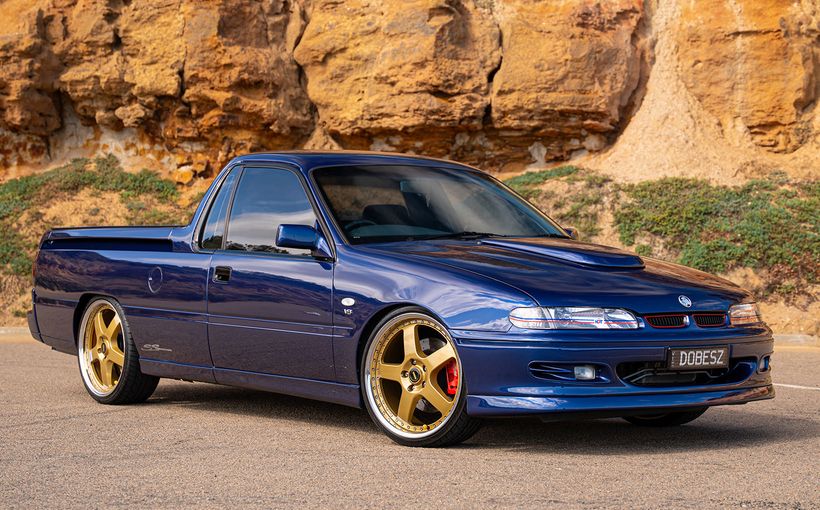
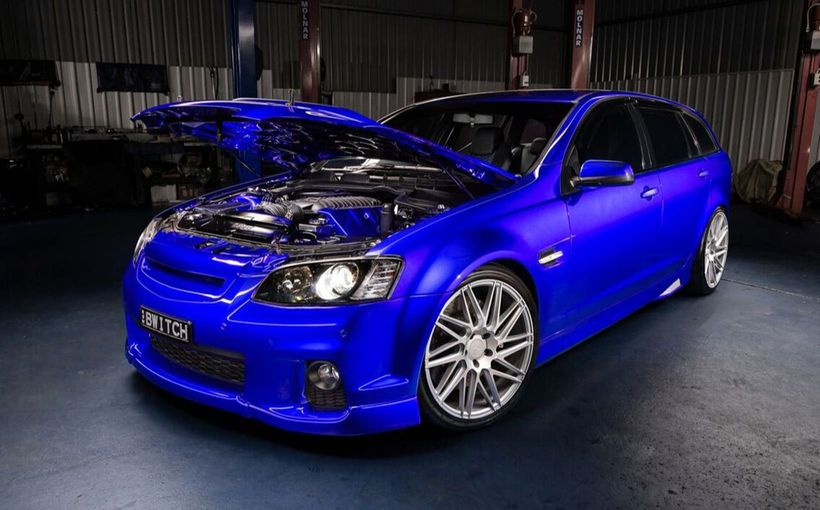
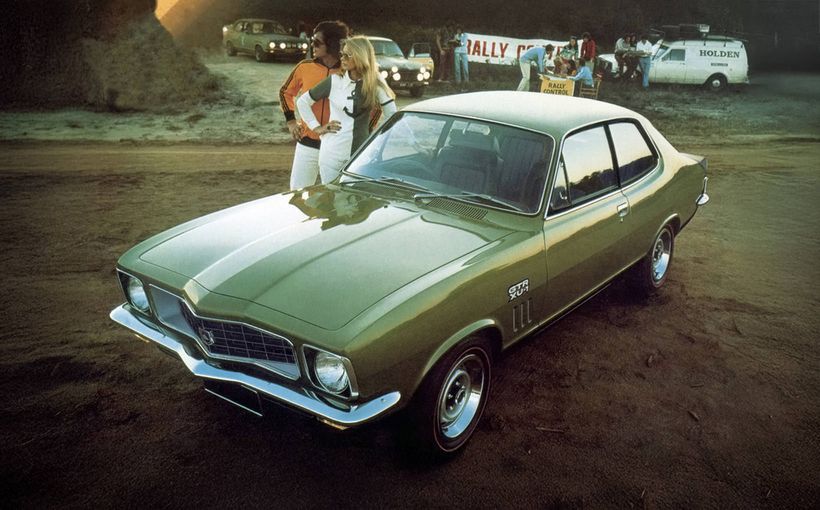
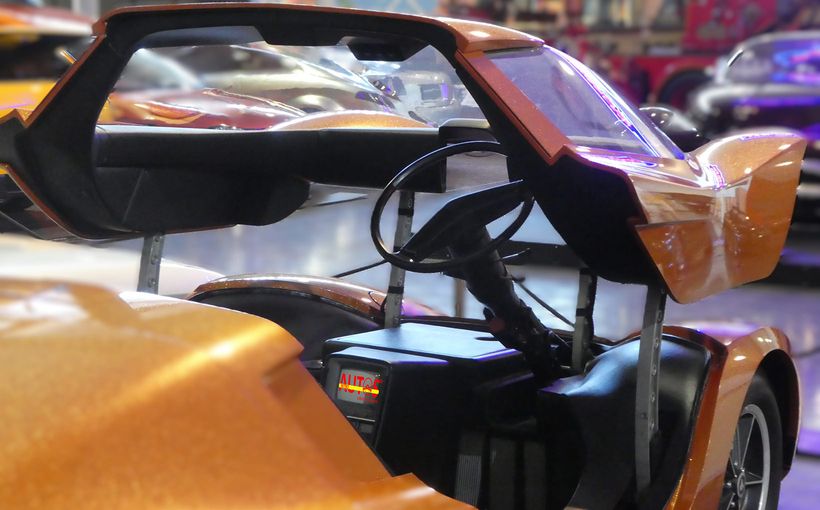
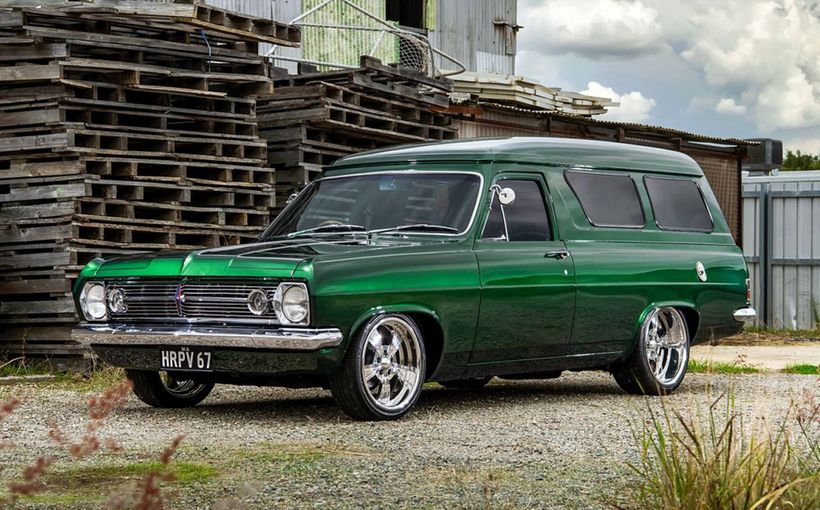

Comments
PonyRider
Chris you must have been in your element with that fabulous selection.
All of them mouth-watering examples of beautiful motor cars !